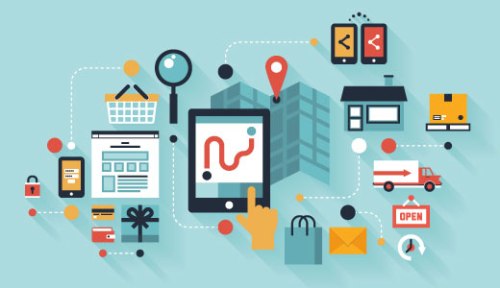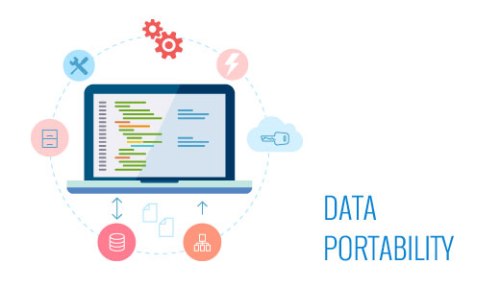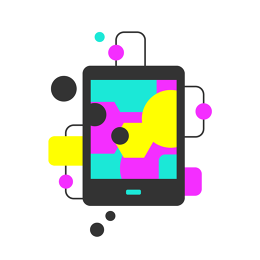This post is a reblog, originally posted May 30, 2015 by Danny Crichton (@DannyCrichton) at TechCrunch

Danny Crichton is an award-winning researcher and writer on regional innovation hubs with an intense passion for building companies and building nations. He is currently a doctoral student at the Harvard Kennedy School and a contributing writer for TechCrunch.
Millennials are rejecting home ownership across the land. Millennials aren’t buying crap anymore, destroying businesses that, well, sell crap. Millennials are changing the workplace to be, I kid you not, more friendly to “millennial values.” Millennials this, millennials that, and those are just some of the stories published this week on this critical, hot-button issue.
Frankly, as a millennial, I’d like to copyright the term and earn a royalty every time it is uttered. Like that Happy Birthday song.
I hate this generational garbage as much as the next person, but there is a kernel of truth that people born in the same years face similar contexts in their lives. My generation witnessed 9/11 and the wars in Afghanistan and Iraq at a very formative age, and we were hit with the global financial crisis right as we were expected to get started in the workforce. That colors your worldview.
Few industries will face a greater struggle targeting these new consumers than banks, who seem wholly unprepared with what to do with us. Indeed, if ever there was a dark evil in the world that millennials as a whole would probably like to see completely destroyed like San Francisco in San Andreas, it is the banking industry.
The banks aren’t ignorant. Jamie Dimon, the head honcho of JPMorgan Chase, told shareholders this year that “Silicon Valley is coming” with “hundreds of startups” providing alternatives to traditional banking services.
Banks are here to stay – for now. It is clear though that startups, often led by millennials and ushering in millennials as early adopters, are coming for the heart of the banking industry. How it responds will determine who owns the capital of the most important capitalist country in the world.
The Changing Financial Desires Of Millennials
Every generation has its financial goals. For much of the past few decades, the goals have been independence through home and car ownership along with a growing retirement account to supplement Social Security and pensions.
Not surprisingly, banks have catered to these desires with a bevy of products, including vastly increased mortgage lending (in fact, increasing to the point of catastrophe as we recently witnessed) along with home-equity loans, investment and retirement advisors, and a customer service relationship centered on local branches.
![]()
Millennials have entirely different life goals, and yet, financial institutions have yet to respond with the kinds of products needed to satiate them. Just to start, this generation has the greatest levels of student debt in the country’s history. That means that almost all the products currently offered by banks are mostly irrelevant, since major purchases like homes will be pushed back, perhaps indefinitely.
Amazingly, we have seen almost no innovation in student loan lending from the traditional banks, while there has been tremendous innovation in the market from startups like SoFi, Earnest, CommonBond, among others. What gives? Imagine if the first thing a traditional bank said to a college graduate and potential new customer was “open an account, and we can help you refinance your student loans with a lower rate and save serious dollars during repayment.”
I’ll talk about customer service in a moment, but it is clear that there is a gaping hole in the market here that the traditional banks seem all but blind to.

That said, big banks have been a bit more engaged around improving investment advising. Many now offer automated investment accounts directly or through contracted brokerages, just like fintech startups Wealthfront or Betterment. These tools have traditionally targeted millennials, who seem more comfortable with computers handling their money and who also desire a well-balanced investment portfolio (we did survive that global financial crisis after all).
There are all kinds of other financial products that traditional banks should be engaging with. Newer models of credit scores, like those from Affirm, could greatly help younger workers find loans. RobinHood and others are trying to show that stock trading fees are obsolete. Banks have so many opportunities to engage with millennials, it is disappointing to see how much they have ignored this demographic.
That Said, Please Don’t Talk With Us
Yes, we want banks to engage with us, but no, please don’t talk with us. I have only once ever walked out of a bank branch as a completely satisfied customer (this trip may also have involved free candy). Automated investment platforms are not just popular due to their lower fees and balanced risks, but also because traditional investment advisors had no fricking idea what they were selling (yet somehow still became rich in the process).
Traditional banks have moved many of their banking functions online or at least to ATMs, since every in-person transaction has a significant cost attached to it. But so far, none of them has developed the user experience and product quality necessary to really take full advantage of mobile and the web for banking.
Simple Bank, the startup acquired last year by BBVA, tried to reach a point where everything could be done through mobile. They missed the mark, but the potential is still there. With Nimbl acting as a “Uber for ATMs” and several other new startup banking services, this dream seems much less far-fetched than it did just a year or two ago.
I want a bank where absolutely everything can happen through my phone, and if I need help, I can ask a banker about something instantly through the click of a button. I want a concentrated set of services designed just for me, and not a menu with more than fifty options for services that aren’t even relevant for me.
I want to transfer money in ten seconds – not ten screens.
Along that simplicity theme, part of shedding all of these human touch points is also reducing the complexity of banking products. Every time I go to a bank, there is a rigamarole involved as we go through the new-account-type-of-the-month, each of course with their complex tiers of fees. I know this is designed to screw me, and I don’t like it. Simplicity is golden.
The Future Bank For Everyone
Yes, millennials are annoying customers, but here is the irony: everyone wants these features. Consumers want to be able to manage their finances from their phones and tablets while limiting their visits to bank branches and bank tellers. Plus, everyone hates bank fees, particularly their complexity and lack of transparency.
The difference today is that millennials are willing to shop elsewhere, because we are simply not going to accept that these are the only products on the market. We are willing to try new startups and their innovations, since they speak our consumer language while the traditional banks do not.
If the big Wall Street banks fail in this new environment, it won’t be because they failed to bring millennials into the fold. It will be because they will have failed to innovate for all of their customers.
 Powerwall, which is aimed at the residential market, is designed to store power generated at peak solar time for use during power outages and out-of-peak solar time, including night. The system’s slim, modular design is adapted from the technology used in those for Tesla’s electric cars and can hold up to 7 kilowatt-hours of energy, which is enough energy to power a typical home in the United States for about 7 hours. A similar product, Tesla
Powerwall, which is aimed at the residential market, is designed to store power generated at peak solar time for use during power outages and out-of-peak solar time, including night. The system’s slim, modular design is adapted from the technology used in those for Tesla’s electric cars and can hold up to 7 kilowatt-hours of energy, which is enough energy to power a typical home in the United States for about 7 hours. A similar product, Tesla























